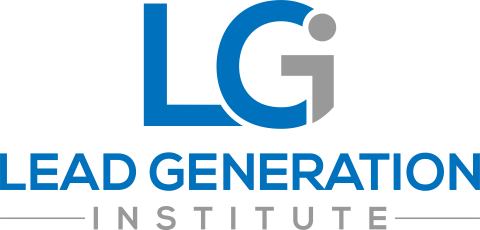Content Amplification and Why You Should do it
Expand your audience. Establish your brand as a thought leader in your industry. Increase trust. Generate new opportunities. Drive leads and sales.
Content amplification is a marketing strategy that can help you do all of the above. Put simply, content amplification gets your content to a wider audience.
So how do you do it? Here are some examples:
- You can use paid search to increase awareness of your white paper.
- Use paid social ads to make your latest eBook known.
- Promote your content through an influencer.
Why Should You Be Amplifying Your Content?
Any business executing some form of content marketing strategy knows that the competition is fierce. With billions of blog posts being published every single day, doing whatever possible to stand out from the crowd is a necessity. This is where content amplification comes into play. This also comes at a time when both social media channels and search engines, like Google, tend to prioritize paid content. However, you may feel about that-it’s happening.
What’s more, an analysis of more than one million blog posts has concluded that half of them receive fewer than eight social shares in total. (That’s a lot of content work for too private of an audience). Of the one million posts analyzed, 75% received no referring domain links whatsoever and 42% of the professionally marketed blogs received 10 interactions or fewer. That’s a lot of screaming typing into the void.
Stop Relying on Organic
Even though it’s possible to build steady and consistent organic traffic with commitment, time, and patience, relying solely on organic traffic can often lead to wasted resources and frustration. In today’s digital landscape, knowing how to use content amplification can make or break your digital marketing strategy. Or at least make the difference between someone seeing it or not.
Hint: we want them to see it. Then, read it. Then, hopefully engage with it, share it and/or buy it.
Below are several content amplification strategies that can help you boost the visibility of your individual pieces of content.
Best Foot Forward
Granted, every piece of content should be of high quality, but not every blog post will have the same impact with your audience. What’s more, paying to promote your content via content advertising can be quite tempting and cost-effective. Yet, this technique may be somewhat counterproductive if you try to promote everything.
While, at first glance, it may seem wise to promote all of your content, content amplification will lose most of its effectiveness if you don’t promote only your highest quality content. This also applies to paid social. Don’t muddy your own waters when there are already too many people in the pool. [bctt tweet=”If you promote everything, you risk exposure on less interesting or engaging content which turns off your potential audience. Think strategically, then promote surgically.”]
Publish on Multiple Platforms
Another effective content amplification tactic is to use more than one platform. Most marketers know by now that they need to publish their content on multiple social channels if they wish to gain any traction. This, of course, doesn’t mean that brands should extend their digital marketing efforts on every social platform out there – quite the contrary.
In fact, most brands will limit themselves to two or three of the big social players such as Facebook, Twitter, Instagram, LinkedIn, Pinterest, and Snapchat. They do so based on which social platform works best for their industry, type of content, and audience.
That said, it’s important to keep in mind that amplification is all about having your content make as much noise as possible. By publishing it on different social networks, you are increasing its exposure. Also, you shouldn’t limit yourself to just the aforementioned social platforms. Depending on the nature and style of your content, you can also go for other platforms such as Reddit, Imgur, Digg, Medium, Hacker News, or LinkedIn Pulse, among others. The general rule of thumb is to have your top-performing content published on as many relevant platforms as possible. Keywords-Top-performing & relevant.
Use Native Advertising
Whether it’s Facebook Ads, sponsored Tweets, pre-roll video ads, etc., almost all social networks offer a way for brands to pay to promote their content as a means of increasing their reach and visibility. When doing this, it’s best that you promote content that supports your sales funnel. This can be content that links back to your website, markets an event, or promotes a product.
Always try and keep your audience top-of-mind during the content creation and promotion process. Is that post intended for followers or new people? Are you interested in a specific gender, demographic, or people with specific interests? Keep in mind that not everyone will respond in the same way to your content. Be sure to tailor it to the people who are most likely to engage.
Target Personas
Remarketing content to people who have already visited your website, for instance, is a great way of increasing that content’s overall effectiveness. Yet, even with a comprehensive remarketing campaign, your conversion rates can still be quite low. That said, you can choose certain parameters and behaviors and target your content based on those.
It may seem counterintuitive at first to be super strict with the people you direct your content toward, instead of remarketing to a wide audience. In the end, the purpose is to increase the visibility of your posts, right? Well, not exactly. The bottom line is to improve your conversion rates, and it would be pointless to remarket your content to people that have little to no interest in what you have to offer or that have no decision-making power.
You can work on developing personas of ideal customers and remarket your content to users that share the same characteristics. By being selective with your targeting parameters, you will ensure that your remarketing ads will appear to the right people at the right time and with the right offer. Just make sure that you take this approach during the remarketing process, not during the initial PPC or paid social campaign.
Consider Advocacy Marketing
Advocacy marketing is a sort of content amplification but on steroids. In short, this is a strategy that uses existing customers to talk about your products and services on your behalf. You can have your happy customers sign up to receive your latest content in their email inbox and let them choose whether to share it directly on their social channels. This method will tend to have a higher organic reach rate than a brand-owned social channel.
The more people you manage to get into this advocacy program, the greater the number of personal social channels your content will appear on. You can also make use of your employees to share your content on their personal social accounts. On average, people are connected to around 600 other people on social media. If you have 50 people as your advocates, you have the potential to be seen by 30,000 people. If, say, 500 of these 30,000 share the content, you can get 300,000 people to see your content without you having to do or pay too much for it.
Leverage Influencer Marketing
Somewhat similar to advocacy marketing, but on a different level is influencer marketing. Any social user with a following greater than 10,000 people can be considered an influencer. Making use of their fan base, you can quickly and effectively amplify your content over social media.
An added benefit of influencers is the reputation and trust they have with their following. Do, however, keep in mind that most influencers will expect to be compensated in some form for sharing your content. It’s best to look at them as a marketing partner who will amplify your content over a period of time.
Micro-influencers (those with a following between 10,000 and 100,000 users), are great if you are looking to target a niche audience.
Enter Niche Communities
Certain social platforms like Reddit, Inbound.org, Growth Hackers, or YCombinator are notorious for their anti-marketing stance. Though not impossible to market on these platforms, it’s probably better not to go down that route. Instead, you follow suit to how they work; namely, get involved in the conversation. At their core, these platforms are gathering places for people to share and talk about their passions.
You should look to become a trusted and valued member of the niche communities that are most relevant to your business by posting relevant and useful links for users to consume and discuss. The more valued a community member you are, the more likely the other members will share your content organically.
Takeaway
Even though this list of content amplification strategies is not exhaustive, it does, however, present you with some of the most effective tactics that you can employ. Do keep in mind that there is no one-size-fits-all approach, and a bit of trial-and-error may be required. Nevertheless, content amplification is a requirement in today’s highly competitive digital environment.
If you want to learn more about content amplification and other content marketing strategies, subscribe to our newsletter and get the latest delivered to your inbox.




